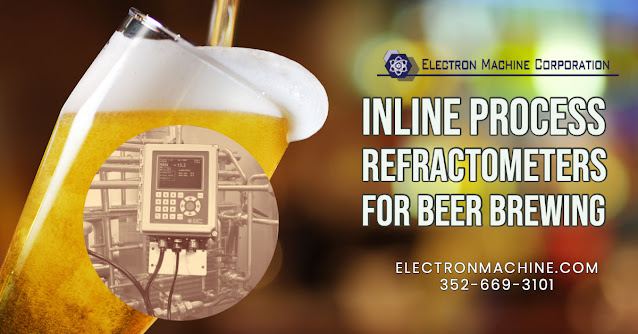Industrial refractometers are an indispensable component of process automation because they contribute to maintaining product quality and uniformity, reducing waste, and enhancing output. A substance's refractive index can be determined using a refractometer, which assesses the degree to which a sample causes light to bend as it travels through the process media. This measurement provides helpful information regarding the composition and concentration of a solution, both of which are essential in a wide variety of industrial processes.
Industries That Commonly Use Inline Process Refractometers:
- Inline process refractometers are used in pulp and paper manufacturing to determine the percent of dissolved solids present during various stages of the production process. These phases include the pulping process, the bleaching process, and the paper coating process.
- Inline process refractometers are commonly used in the food and beverage sector to determine the percentage of sugar occurring in various goods like juices, jams, and other condiments. This measurement contributes to ensuring that the products have a consistent flavor and texture across the line and meet all regulatory criteria.
- In the pharmaceutical sector, process refractometers measure the concentration of active pharmaceutical substances, an essential step in ensuring the product is effective and safe.
- In the production of semiconductors, inline process refractometers measure the concentration of chemical solutions utilized in various production processes. These processes include cleaning, etching, and chemical mechanical planarization.
- Process refractometers assist in producing industrial chemicals to measure the concentration of dissolved solids such as salts, acids, and other compounds at various points throughout the production process.
Industrial refractometers offer real-time, precise, and dependable measurements by automating the process of measuring refractive index, thus eliminating the need for manual testing. This automation minimizes errors, enhances process efficiency, and reduces labor costs that result from manual testing. Additionally, automated refractometers supply data to distributed control systems and PLCs, enabling continuous monitoring and regulation of essential process parameters.
In general, industrial refractometers play an essential part in the automation of processes. They contribute to the maintenance of product quality and consistency, as well as to the enhancement of efficiency and productivity, as well as to the reduction of waste and expenses. As automation technology progresses, refractometers and other process monitoring devices may take on an even more significant role in industrial settings.
Electron Machine Corporation
https://electronmachine.com
+1 352-669-3101






